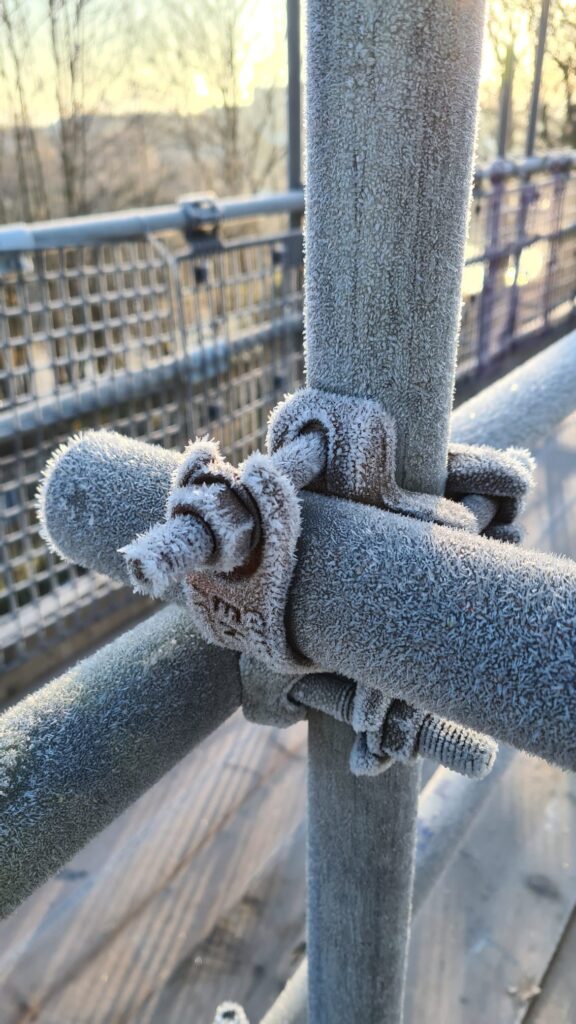Management of Scaffolds During Christmas Closure
30th November 2023
We asked Jamie Lyons, our Consultancy Manager and Senior Health & Safety Advisor what advice he would give to those managing construction sites, in relation to scaffolding inspection requirements over the Christmas break. Here’s what he said:
As Christmas approaches within the next few weeks, it’s the season for hanging up lights, adorning the tree, and, for the fortunate ones, engaging in some serious shopping! However, if you’re responsible for overseeing a construction site, it’s also crucial to start considering on how to safely close down the site during the festive break.
The Christmas break typically marks the longest period of closure for construction sites across the UK. This holiday respite is a much-anticipated and a well-deserved break, especially for those who have been outdoors during the colder, wetter months. Nonetheless, failing to plan for securing the site and managing your Christmas celebrations could lead to unwelcome disruptions…


Jamie says it is crucial to consider the following;
- How scaffolds can be protected and secured from unauthorised access;
- Inspection regimes for scaffolds that are not in use over the Christmas break.
To ensure scaffolds do not deteriorate in the time between the last inspection and the first inspection after the Christmas break it is important that they are left in good condition. It may be necessary to secure all decking boards or temporarily remove materials that have been stored on loading bays or working platforms that could become detached by poor weather condition, for example, high winds.
It is the responsibility of the principal contractor / main contractor / client to ensure that any unauthorised access onto the scaffold is prevented. A risk assessment of the particular site should be undertaken to identify the practical methods of preventing access. However, the Work at Height Regulations 2005 (WAHR) state;
“While a scaffold is not available for use, including during its assembly, dismantling or alteration, it shall be marked with general warning signs in accordance with the Health and Safety (Safety Signs and Signals) Regulations 1996 and be suitably delineated by physical means preventing access to the danger zone.”
This should be achieved by physical means such as removal of ladders or locking of stair towers etc and warning signs should be posted, advising that the scaffold is unsafe for use.
Where ladders at ground level need to remain in place, these should be made un-useable by for instance installing locked ladder guards. Where these are used, ensure that they fit the full width of the ladder and cover at least six rungs. Remember that trespassers are frequently young children looking for fun, and they may have small feet, so a minimal rung width should be exposed when the locked guard is pushed hard to one side.
As for the inspection requirements for scaffolds that are not in use over the Christmas period:
The requirement of WAHR to inspect scaffolds that are in use is well known. However, scaffolds that are not being accessed during the closure period do not need to be inspected every seven days. That said, the requirements of Regulation 19 of The Construction (Design and Management) Regulations 2015 are not so well known in a scaffolding context, and this states;
“All practicable steps must be taken, where necessary to prevent danger to any person, to ensure that any new or existing structure does not collapse if, due to the carrying out of construction work, it –
(a) may become unstable; or
(b) is in a temporary state of weakness or instability.”
This is interpreted to mean that steps must be taken to ensure that structures (which includes scaffolding) remain stable.
It is worth remembering that if any event occurs which could cause deterioration of the scaffold (Stormy weather or high winds, for example), then an inspection of the scaffold may well be required, and it may be necessary to re-open a closed site to check the integrity of the scaffold.
Have a great Christmas and we look forward to working with you in 2024!